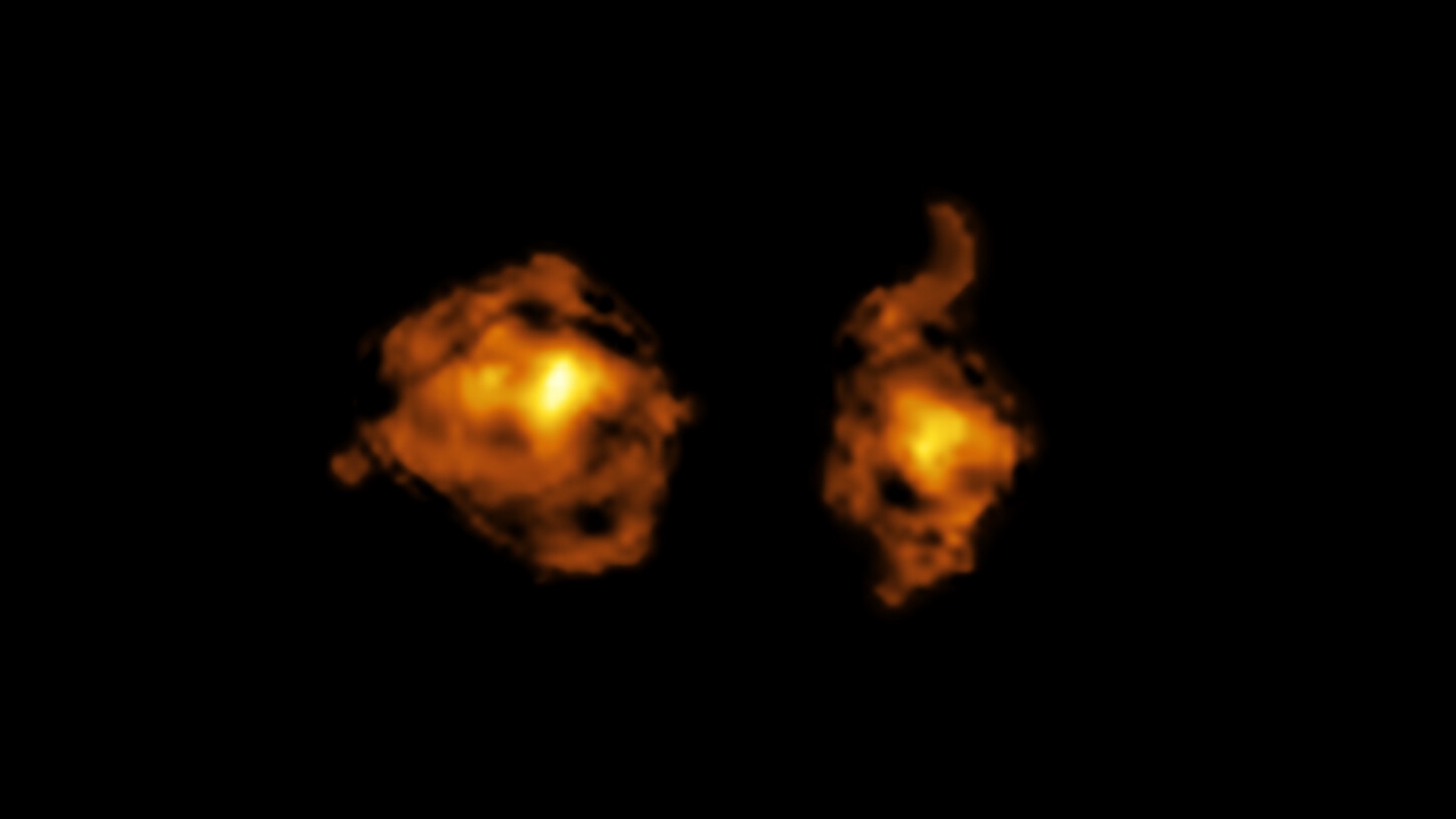Space photo of the week: Violent galaxies seen 'jousting' near the dawn of time
The new image shows one galaxy piercing another with intense quasar radiation. Astronomers likened the violent galaxy collision to a medieval joust.

What it is: Two galaxies colliding in the early universe
Where it is: 11 billion light-years away, in the constellation Cetus
When it was shared: May 21, 2025
If you get up before sunrise any day this month, you'll see bright Venus rising in the east. Just below it, in the constellation Cetus (The Whale), something spectacularly violent is happening in the distant background: a "cosmic joust" between two giant galaxies.
There, 11 billion light-years from Earth and close to the beginning of the universe itself, two galaxies are moving toward each other at speeds of 310 miles per second (500 kilometers per second), destined to collide before retreating and colliding again and again.
Captured by the European Southern Observatory's Very Large Telescope and Atacama Large Millimeter/submillimeter Array in Chile and published this week in Nature, the image is unique because one of the galaxies is a quasar, in which a supermassive black hole consumes so much gas and dust that it produces a glowing disk at the center of a galaxy. According to the European Space Agency, quasars are among the most luminous objects in the known universe, typically emitting thousands of times more light than the entire Milky Way.
This quasar, J012555.11−012925.00, is shown on the right of the image. As the galaxy on the right collides with the galaxy on the left, it pierces its clouds of gas and dust with intense radiation — hence the comparison to the medieval sport of jousting — inhibiting the galaxy's ability to form new stars. The collision between these two galaxies leaves the one on the left in a much worse state.
It's the first time astronomers have witnessed such a collision.
"Here we see for the first time the effect of a quasar's radiation directly on the internal structure of the gas in an otherwise regular galaxy," Sergey Balashev, co-lead of the study and a researcher at the Ioffe Institute in St. Petersburg, Russia, said in a statement. The observations indicate that the spear of radiation from the quasar leaves intact only the densest regions of gas and dust, which are likely too small to form stars.
Related: Cotton candy clouds shine in one of Hubble's most beautiful images ever
Get the world’s most fascinating discoveries delivered straight to your inbox.
Not surprisingly, the depletion of the companion galaxy leaves the quasar stronger, which provides new fuel to the supermassive black hole powering the quasar. "These mergers are thought to bring huge amounts of gas to supermassive black holes residing in galaxy centers," Balashev said.
In addition to this spectacular image, the European Southern Observatory published videos on YouTube that explain the science, zoom in on the galactic collision, and give an artist's impression of the violent event.
For more sublime space images, check out our Space Photo of the Week archives.

Jamie Carter is a freelance journalist and regular Live Science contributor based in Cardiff, U.K. He is the author of A Stargazing Program For Beginners and lectures on astronomy and the natural world. Jamie regularly writes for Space.com, TechRadar.com, Forbes Science, BBC Wildlife magazine and Scientific American, and many others. He edits WhenIsTheNextEclipse.com.
You must confirm your public display name before commenting
Please logout and then login again, you will then be prompted to enter your display name.
